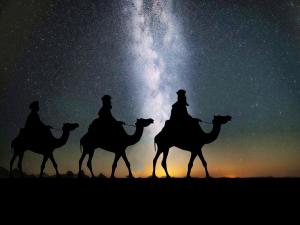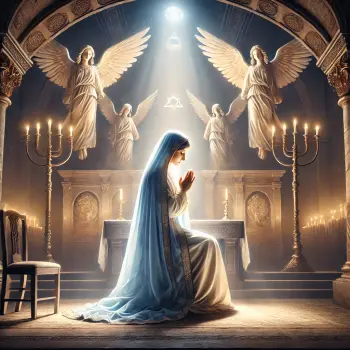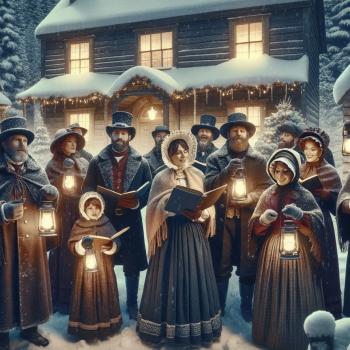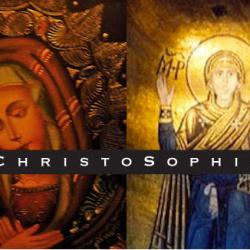I’ve always been fascinated with the Three Wise Men of the Nativity Story. While growing up, my family maintained a Christmas Eve tradition of gathering around the fireplace and reading The Story of the Other Wise Man, a fictional tale written by Henry Van Dyke. The touching story features a Magi named Artaban who sees a sign in the heavens that he hopes will lead him to the Messiah. Artaban takes with him three precious gifts to present to the Messiah only to miss Him at every turn. For 33 years Artaban pursued Jesus, and ultimately the Lord appeared to him as he lay dying.
The identities of the Three Wise Men, also known as the Magi or Kings, have been a subject of speculation, legend, and literature since the early days of Christianity. The biblical account of these visitors can be found in the Gospel of Matthew, where they are described as “wise men from the East”, who followed a star that led them to Bethlehem to pay homage to the newborn Jesus. The gospel does not provide their names or backgrounds, but over time, various Christian traditions have eagerly filled in these details.

Stemming from tradition, the most commonly accepted names of the Three Wise Men are Caspar, Melchior, and Balthazar. These names and identities appear to have originated in the Western Christian church during the medieval period and have no foundation in the biblical texts. Their supposed origins are as follows:
- Melchior is often depicted as an elderly man, sometimes with a white beard, representing the Magi of Persia. He is traditionally said to have brought gold to Jesus, which is symbolic of Jesus’ royal standing.
- Caspar is usually shown as younger, beardless, and sometimes as a man of Indian or occasionally Ethiopian descent. Caspar’s gift of frankincense is symbolic of Jesus’ divinity and the worship due to Him.
- Balthazar is frequently depicted as a middle-aged man with a dark beard, representing the Arabian Magi. His gift, myrrh, is a resin used for anointing the dead, perhaps foreshadowing Jesus’ death and embalming.
The origins of these names are shrouded in mystery and seem to have been a result of a confluence of Christian tradition, myth, and literature rather than historical documentation. The early Christian church father Tertullian suggested that these men were kings because the Old Testament had prophesied that kings would come to worship the Messiah. This interpretation led to the portrayal of the Magi as kings in Western art and Christian culture.
It is also believed that these three gifts had prophetic significance beyond their material value. Gold was a gift for a king; frankincense, as a perfume or incense, was associated with deity; and myrrh, an embalming oil, was a symbol of death.
Throughout the Christian world, the identities of the Three Wise Men are celebrated in various ways. In Western Christianity, the Feast of the Epiphany on January 6th marks their visit. In some cultures, this day is celebrated with gift-giving, in memory of the gifts brought to Jesus. The Eastern Orthodox Church, on the other hand, tends to emphasize the baptism of Jesus in their celebration of the Epiphany and does not give as much attention to the Magi.

Veering a bit from history and into the esoteric, Paramhansa Yogananda, a preeminent spiritual figure and founder of the Self-Realization Fellowship, offered a unique interpretation of the Christmas story’s Three Wise Men. In his teachings, he claims that these biblical sages were none other than his own lineage of gurus in previous incarnations: Mahavatar Babaji, Lahiri Mahasaya, and Sri Yukteswar. According to Yogananda, these gurus have guided humanity across ages, assuming different forms to impart spiritual wisdom.
Lahiri Mahasaya, a householder guru, played a pivotal role in the revival of Kriya Yoga, a sacred meditation technique aimed at hastening spiritual development. Sri Yukteswar, Yogananda’s direct guru, was known for his deep astrological understanding and spiritual insight. Babaji, who is considered an immortal yogi and a divine incarnation who resides in the deep Himalayas, is said to have retained his physical form for centuries and is believed by Yogananda’s followers to be a manifestation of the divine who comes to help humanity in times of great need. We hear echoes of this “divine assistance” from Krishna’s life mission as told in the Bhagavad Gita and within the Bodhisattva tradition found within Buddhism.
Yogananda’s assertion that these three served as the Magi offers a mystical bridge between Christian and Eastern traditions, symbolizing a universal quest for enlightenment that transcends the boundaries of time and religion. This perspective is detailed in his seminal work, “Autobiography of a Yogi“, where he explores the deeper spiritual connections and meanings behind such stories, suggesting an intertwining of spiritual paths and a shared divine heritage.
Dr. Stylianos Atteshlis, typically known by his spiritual name Daskalos (meaning “teacher” in Greek), offered an eclectic blend of teachings that drew upon Christian mysticism, esoteric doctrines, and insights from his own spiritual development. Among his many intriguing teachings, he presented an alternative perspective on the narrative of the Three Wise Men. Daskalos identified these figures not merely as anonymous wise men but as prominent figures from diverse cultural backgrounds, each representing a distinct lineage of wisdom and spirituality.
According to Daskalos, the first of these was the Bedouin Shakh Baal-das-Aaussar, “The Servant of Osiris,” suggesting a link to Egyptian mysticism and the worship of Osiris, an Egyptian deity associated with the afterlife, resurrection, and the cycle of Nile floods that Egypt relied upon. The second figure was described as a king from India, the Maharajah Rama Tavaivahan. Upon seeing the Christ Child he reportedly exclaimed “Ham El Khior,” interpreted by Daskalos as “I see God” in Sanskrit, symbolizing the recognition of divinity. This profound declaration led to the Indian king becoming known as Maharajah Ham El Khio, a title that reflected his spiritual epiphany. Lastly, Daskalos spoke of the Armenian King Gaspar, integrating the Christian tradition with Armenian royal lineage, thereby weaving a rich tapestry of intercultural spiritual leadership converging to honor the birth of Christ. Daskalos’ teachings aimed to synchronize various spiritual paths and promote a universal quest for the divine.
The enduring mystery and allure of the Three Wise Men from the Nativity Story, transcending centuries of myth and tradition, continues to inspire and intrigue. From the traditional Christian names of Caspar, Melchior, and Balthazar to the esoteric interpretations by figures like Paramhansa Yogananda and Daskalos, these enigmatic figures embody a rich confluence of history, spirituality, and culture. Whether viewed as symbolic emissaries in a religious narrative or as a metaphorical bridge connecting diverse spiritual paths, their story invites us to explore deeper meanings and universal truths found in the Nativity story.














